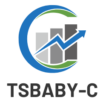Navigating the world of self-employment can be daunting, especially when it comes to understanding your accounting methods. If you’re filing a Schedule C, you’re not just reporting income; you’re also choosing how to track your expenses and revenue. This choice can significantly impact your tax liability and financial reporting.
I’ve found that selecting the right accounting method—cash or accrual—can make a world of difference for small business owners. Each method has its pros and cons, and understanding them is crucial for making informed decisions. In this article, I’ll break down the essentials of the accounting method Schedule C, helping you streamline your finances and maximize your deductions. Let’s dive in and simplify this important aspect of your business.
Key Takeaways
- Understanding Accounting Methods: Familiarize yourself with the two primary accounting methods, cash and accrual, as they significantly impact how income and expenses are reported on Schedule C.
- Cash Method Benefits: The cash method provides a straightforward view of cash flow, making it suitable for small businesses with limited transactions. Income is reported when received, allowing for better cash management.
- Accrual Method Advantages: The accrual method offers a more accurate financial picture by recognizing income and expenses when earned and incurred. This method is ideal for businesses with credit sales or complex transactions, despite its increased record-keeping demands.
- Impact on Taxes: The chosen accounting method affects your tax obligations; cash accounting may result in lower taxable income, while accrual accounting offers a more comprehensive view but might lead to higher short-term tax liabilities.
- Accuracy in Reporting: Ensure accurate completion of Schedule C by gathering necessary income and expense documentation and following detailed step-by-step instructions to avoid common mistakes.
- Consulting a Professional: Seek guidance from a tax professional to optimize your accounting method selection and ensure compliance, especially when your business circumstances change.
Accounting Method Schedule C
Understanding the accounting method Schedule C is crucial for self-employed individuals. The method affects how income and expenses are reported for tax purposes. Two primary methods are available: cash and accrual.
Cash Method
- Definition: The cash method recognizes income when received and expenses when paid.
- Advantages: This method provides a clearer view of cash flow. I can easily track my business’s financial health by knowing when funds are available.
- Applicability: Generally used by small businesses with simple transactions. For many freelancers and independent contractors, this method aligns with operational realities.
- Definition: The accrual method recognizes income when earned and expenses when incurred, regardless of cash flow.
- Advantages: This method presents a more accurate financial picture, especially for businesses offering credit or deferred payment options. I can better gauge long-term profitability and liability.
- Applicability: Required for larger businesses or those with inventory. Utilizing this method may enhance strategic planning and investment opportunities.
Choosing the appropriate method depends on various factors, including the business size and complexity. Additionally, I can switch methods, but I must be aware of IRS regulations regarding reporting consistency. Each method impacts my tax filing and financial management strategies significantly.
Types of Accounting Methods
Understanding the available accounting methods is essential for accurate financial reporting and tax compliance. The two primary methods are cash basis and accrual basis accounting.
Cash Basis Accounting
Cash basis accounting records income and expenses only when cash is exchanged. This method provides a straightforward view of cash flow, making it particularly useful for small businesses with limited transactions. I recognize income when I receive payments and recognize expenses when I pay bills. This simplicity can help in tracking finances effectively and managing cash flow. However, cash basis accounting may not accurately reflect the financial health of a business that offers credit or has accounts receivable.
Accrual Basis Accounting
Accrual basis accounting recognizes income when it is earned and expenses when they are incurred, regardless of when cash changes hands. This method offers a more comprehensive view of financial performance, reflecting sales made on credit and expenses incurred but not yet paid. Utilizing accrual basis accounting enables me to assess profitability and financial obligations more accurately. This method is often beneficial for businesses with complex transactions or those anticipating significant growth. However, it requires more rigorous record-keeping and may complicate cash flow management.
Importance of Choosing the Right Method
Choosing the right accounting method is critical for self-employed individuals. The selected method directly affects tax obligations and financial insights.
Impact on Taxes
The accounting method you select—cash or accrual—determines how and when you report income and deduct expenses, impacting your overall tax liability. With cash accounting, I report income upon receipt and expenses when I pay them, often resulting in lower taxable income. This method suits small businesses focused on cash flow. Contrarily, accrual accounting recognizes income when earned and expenses when incurred, which might lead to a higher tax obligation in the short term, especially if I’ve extended credit to customers. Understanding these nuances helps in strategic planning, allowing me to maximize deductions and minimize taxes.
Business Financial Reporting
The choice of accounting method significantly influences financial reporting. Cash accounting provides an immediate view of cash flow, making it easier for me to assess liquidity. This method is particularly advantageous for small businesses with straightforward transactions. Alternatively, accrual accounting offers a comprehensive financial picture, reflecting true profitability and performance over time, essential for businesses experiencing growth or managing complex transactions. This method demands diligent record-keeping and can present challenges in cash flow management, but it enhances the accuracy of financial statements. Making the right choice ensures I align my financial reporting with my business goals.
How to Complete Schedule C
Completing Schedule C requires careful preparation and attention to detail. I’ll outline the necessary information and provide step-by-step instructions to simplify the process.
Gathering Necessary Information
Gathering necessary information ensures accurate completion of Schedule C. I focus on collecting the following items:
- Business Income Records: Collect income statements, bank statements, and sales receipts to report total revenue.
- Expense Documentation: Compile receipts and invoices for all business-related expenses like supplies, utilities, and travel.
- Cost of Goods Sold (COGS) Information: If applicable, gather records of inventory purchases and costs to track COGS accurately.
- Previous Year’s Tax Return: Review the prior year’s Schedule C for any useful information or carryover amounts.
- Accounting Method Details: Confirm your chosen accounting method schedule c—cash or accrual—as it affects income and expense reporting.
Step-by-Step Instructions
Following these step-by-step instructions streamlines filling out Schedule C:
- Fill Out Basic Information: Enter your name, Social Security Number (SSN), and business name at the top of Schedule C.
- Report Income: Record all business income on line 1. Include total revenue from sales, services, and other income sources.
- Calculate COGS (if applicable): Complete Part III to calculate your COGS by inputting inventory at the beginning, purchases, and closing inventory values.
- Detail Expenses: Complete Part II by entering expenses in the specified categories, such as advertising, car and truck expenses, and home office deductions.
- Total Expenses: Sum all expenses in part V and record the total on line 28.
- Calculate Net Profit or Loss: Subtract total expenses from total income on line 31. This figure represents your net profit or loss.
- Sign and Date: Finally, sign and date the form, ensuring all information is accurate and complete before submission.
This structured approach simplifies the completion of Schedule C and promotes accuracy in reporting business income and expenses.
Common Mistakes to Avoid
Choosing the wrong accounting method can lead to significant errors in tax reporting. I often see self-employed individuals mistakenly opt for cash basis accounting when their business operations suit accrual accounting. This choice can result in underreporting income, which may trigger audits and penalties.
Inadequate record-keeping is another frequent mistake. I recommend maintaining organized documentation of all income and expenses. Missing receipts or scattered records can complicate the preparation of Schedule C and lead to incorrect tax filings.
Failing to update the accounting method when circumstances change also presents challenges. Whether expanding operations or altering payment terms, I ensure my reporting method reflects the current business status to maintain compliance with IRS regulations.
Neglecting to consult a tax professional often leaves individuals unprepared. I advise seeking expert guidance, especially when transitioning between accounting methods or facing complex transactions. Their insights can clarify compliance obligations and optimize tax outcomes.
Misunderstanding deductible expenses can alter the financial picture. I emphasize identifying all eligible expenses related to my business operation, such as home office costs or mileage. Overlooking deductions can inflate taxable income unjustifiably.
Lastly, confusion around net profit calculation can mislead financial assessments. I ensure that all revenue and expenses are accurately accounted for to compute the net profit or loss correctly. Errors here can impact estimated tax payments and financial health evaluations.
Method of Accounting
Choosing the right accounting method Schedule C is a vital decision for self-employed individuals. It shapes how I report income and expenses and ultimately impacts my tax liability and financial health. Whether I opt for cash or accrual accounting, understanding the implications of each method is essential for effective financial management.
Staying organized and informed can help me avoid common pitfalls and ensure accurate reporting. As my business evolves, I should remain flexible and consider consulting a tax professional to navigate any changes in my accounting needs. This proactive approach will empower me to make informed choices that align with my business goals and maximize my financial success.



